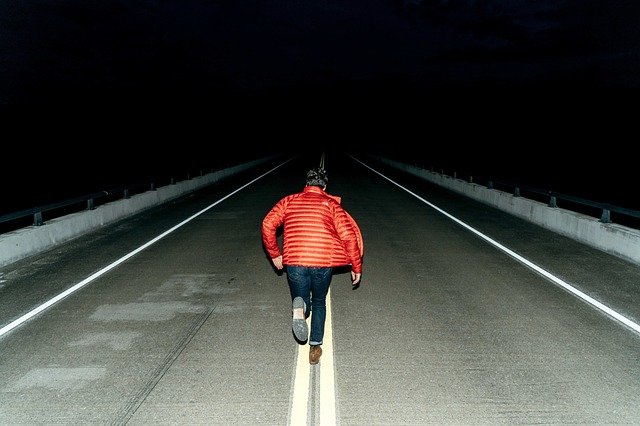When running in the dark, there are multiple safety elements to consider. First, you must view your route, surroundings, gear, weather, and temperature.
Running route for running in the dark.
Runners must be very aware of their route when running in the dark, and several factors make this one of the essential elements of all. When planning to run in the dark, make sure someone knows which route you will be taking and the time you are estimated to be home. Your course should be relatively public and well cared for. In tripping, stepping in a pothole, ditch, or loose tile on the pavement, you could become injured or disorientated. You increase your chances of someone accidentally finding you from walking across your way if you seriously injure yourself by running somewhere public. Staying in a well-lit area will also increase your chances of being seen and receiving help. Similarly, if you do not return home at the stated time, the person you told will know to come looking for you.
Running gear for running in the dark.
Clothing manufacturers do not put reflective strips on a lot of their clothing for no reason. Wear reflective and bright clothing when running in the dark so that people, bikes, and vehicles can see you approaching and know to keep clear. Reflective gear is also helpful in case of an injury as it is easier for people to find you. Temperatures drop in the evenings and at night, so it is also vital to wear suitably water resistant and thermal gear appropriate for the season. This will help you avoid getting sick and causing damage to your lungs. Similarly, your trainers must be suitable for the terrain of your route.
Be aware of your surroundings when running in the dark.
Going cross country or off the beaten track is not advised when running in the dark. Stick to public areas with lots of street lighting and use a route you know well. This allows you to be more familiar with your surroundings when your senses are hindered by darkness. You are more likely to predict when to avoid lifted curbs or portholes. What’s more, local people may recognise you as a regular runner in the area. They will be able to help you in an accident. Knowing the bin collection days of the site will also benefit you. If you can, avoid running on the night before bins are being collected. Bins cause significant disruption to running routes and force you into the road or traffic.
Be safe when running in the dark, and take simple steps to help ensure your safety. Though malicious events are rare, they are worth considering. However, environmental factors are much more significant. Nevertheless, they can be prevented with the application of further thinking and a little preparation.

